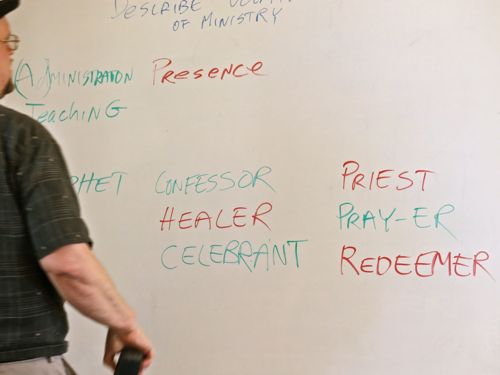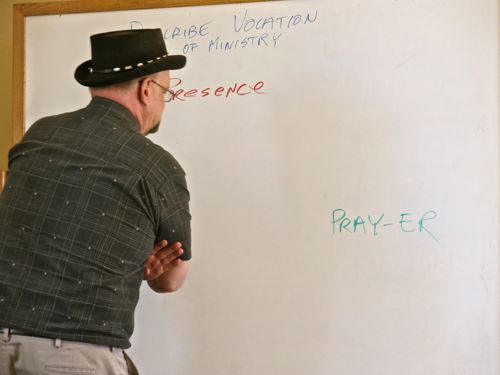Usually, the myth of Persephone spending one third of the year in the underworld is supposed to explain why we have winter. But the climate in Greece is very like the climate in parts of California — winter is the rainy season, when the earth is green, and plants are growing. Martin Nilsson makes this point in his book Greek Popular Religion (New York: Columbia University Press, 1940), p. 51:
“For people who live in a northerly country, where the soil is frozen and covered by snow and ice during the winter and where the season during which everything sprouts and is green comprises about two thirds of the year, it is only natural to think that the Corn Maiden [Persephone] is absent during the four winter months and dwells in the upper world during the eight months of vegetation. And, in fact, this is what most people do think. But it is an ill-considered opinion, for it does not take into account the climatic conditions of Greece. In that country the corn [i.e., grain: barley or wheat] is sown in October. The crops sprout immediately, and they grow and thrive during our winter except for the two or three coldest weeks in January, when they come to a standstill for a short time. Snow is extremely rare and soon melts away. The crops ripen and are reaped in May and threshed in June. This description refers to Attica. The climate is of course different in the mountains, but Eleusis is situated in Attica. The cornfields are green and the crops grow and thrive during our winter, and yet we are asked to believe that the Corn Maiden is absent during this period. There is a period of about four months from the threshing in June to the autumn sowing in October during which the fields are barren and desolate; they are burned by the sun, and not a green stalk is seen on them. Yet we are asked to believe that during these four months the Corn Maiden is present. Obviously she is absent….”
And as I look out at the summer California landscape, where the hillsides are brown and dead-looking (especially this year, after three years of drought), I have to say it would make more sense that Persephone would be in the underworld right now, not in winter. In any case, although Nilsson’s book is a bit dated now, he reminds us that when the ancient Greeks thought of winter, they were not thinking of the stereotypical North American idea of winter, a time of snow and ice and cold.
But if this is not a myth about why it snows in winter, then what is it about?
Dr. Mara Lynn Keller, currently professor of women’s spirituality at the California Institute of Integral Studies, offers a feminist interpretation of the myth. Dr. Keller asserts that the myth of Demeter and Persephone focusses on “three interrelated dimensions of life: (1) fertility and birth; (2) sexuality and marriage; and (3) death and rebirth” (“The Eleusinian Mysteries of Demeter and Persephone: Fertility, Sexuality, and Rebirth,” Journal of Feminist Studies in Religion, spring, 1988, vol. 4, no. 1, p. 31). Keller states that there is evidence to show this myth is an allegory of the role of women in developing agriculture:
“Some archaeologists and anthropologists conclude that plant domestication and thus the gift of agriculture came through women. This theory is corroborated by the mythic core of the Eleusinian Mysteries, where Demeter is said to give the gift of grain to the people and instruct them in the rites to be continued in her name.” (ibid., p. 31)
Further, Keller identifies Hecate as a grandmother figure, so the myth also is about cross-generational bonds: “The story of Persephone, Demeter and Hecate lets us see the loving bonds of daughter, mother, and grandmother. During the epoch of the Goddess religions, women were honored at all stages of life.” (ibid., p. 39) It is a story that started out as an allegory of the cycle of life. Later on, as patriarchal cultures moved in and conquered the older Goddess-worshiping matriarchal cultures, women were relegated to a secondary role. That would imply that this myth comes from that later patriarchal era, when a male god can force a female goddess into marriage — violating in the process those cross-generational bonds — without her consent or even prior knowledge.
This feminist interpretation of the myth has been hotly debated, and some scholars argue that the archaeological evidence does not fully support such an interpretation. Whether or not that is the case, this myth offers plenty of fodder for examining gender roles and the ways women may be dominated by men.
There are, of course, plenty of other interpretations. Dr. Eric Huntsman, professor of ancient scripture, classics and Ancient Near Eastern Studies at Brigham Young University, summarizes some of the better-known interpretations of this myth in his lecture notes to Classical Civilization 241 (accessed 13 August 2014). Dr. Huntsman says this myth could be interpreted as:
— a myth related to the establishment of the Eleusinian Mysteries
— a nature myth about seed growth, and rebirth: Demeter allows no seeds to sprout on earth, when Persephone eats a seed she must return beneath the earth
— a myth about gender roles: females must struggle to define themselves in a world run by males
— a psychological myth about a young woman and her mother adjusting to the young woman’s marriage
— a psychological myth about a young woman growing up and figuring out her sexual identity
In short, this myth is not some pre-scientific attempt to explain why there are seasons!
I would like to suggest that there is at least some truth in several of these interpretations. Like a good poem, this myth contains multiple layers of truth and meaning, and these layers do not reveal themselves right away. Perhaps it is best that the layers of meaning reveal themselves slowly, over time. Emily Dickson could have been talking about the myth of Demeter and Persephone when she wrote:
Tell all the truth but tell it slant —
Success in Circuit lies
Too bright for our infirm Delight
The Truth’s superb surprise
As Lightning to the Children eased
With explanation kind
The Truth must dazzle gradually
Or every man be blind —
[poem #1263]

 When we chose stories for this course, both of us placed the Medusa story at the top of our lists. What makes Medusa such a fascinating figure? The face of Medusa contains great power: the power to freeze others into stone. On the other hand, we considered Medusa’s killer, Perseus, to be little better than a bully, a strong-arm man who coerces others into doing what he wants through violence or the threat of violence. So the story of Medusa can lead to interesting explorations of power, and the use of power.
When we chose stories for this course, both of us placed the Medusa story at the top of our lists. What makes Medusa such a fascinating figure? The face of Medusa contains great power: the power to freeze others into stone. On the other hand, we considered Medusa’s killer, Perseus, to be little better than a bully, a strong-arm man who coerces others into doing what he wants through violence or the threat of violence. So the story of Medusa can lead to interesting explorations of power, and the use of power.

